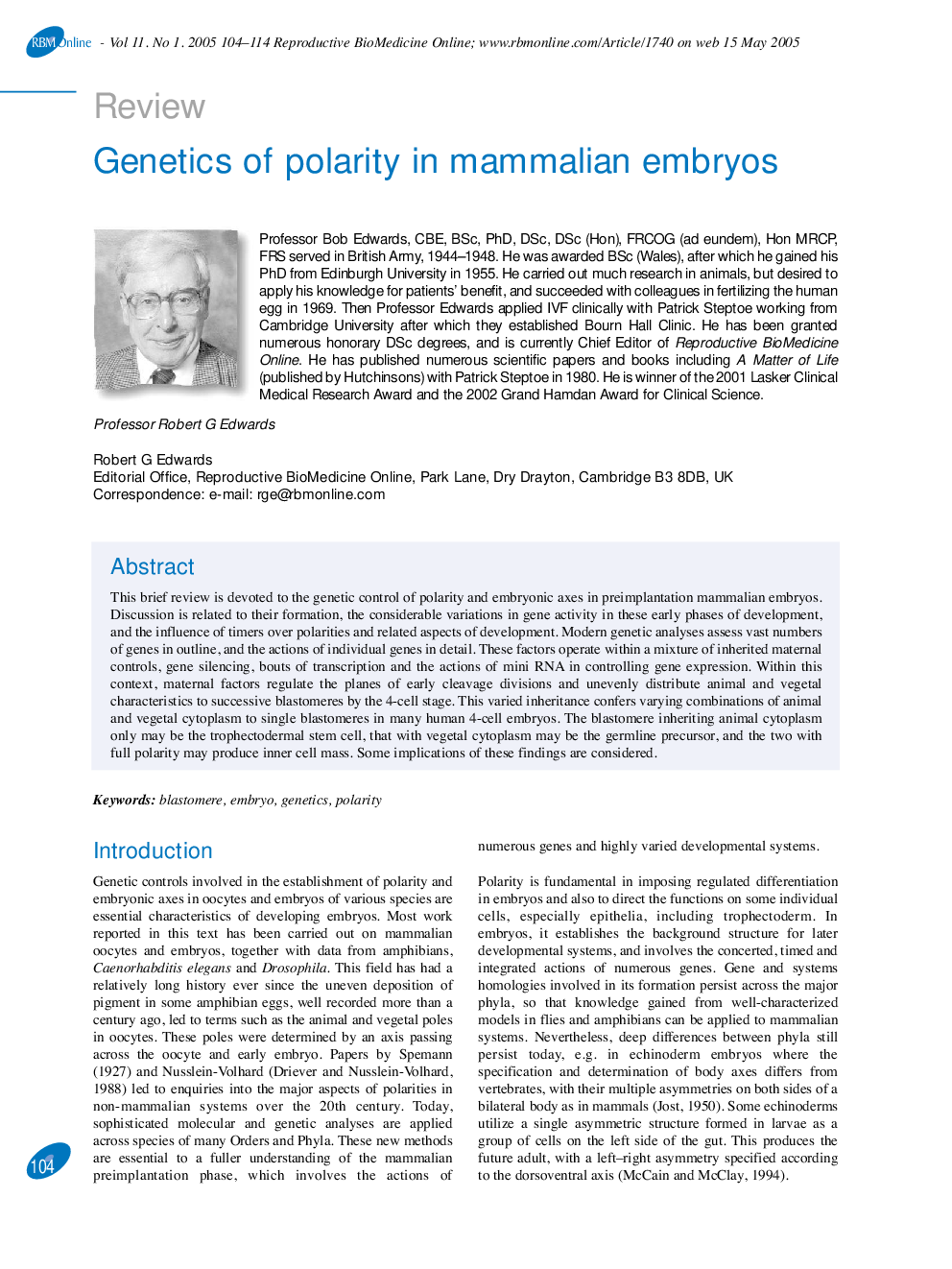| Article ID | Journal | Published Year | Pages | File Type |
|---|---|---|---|---|
| 9335298 | Reproductive BioMedicine Online | 2005 | 11 Pages |
Abstract
This brief review is devoted to the genetic control of polarity and embryonic axes in preimplantation mammalian embryos. Discussion is related to their formation, the considerable variations in gene activity in these early phases of development, and the influence of timers over polarities and related aspects of development. Modern genetic analyses assess vast numbers of genes in outline, and the actions of individual genes in detail. These factors operate within a mixture of inherited maternal controls, gene silencing, bouts of transcription and the actions of mini RNA in controlling gene expression. Within this context, maternal factors regulate the planes of early cleavage divisions and unevenly distribute animal and vegetal characteristics to successive blastomeres by the 4-cell stage. This varied inheritance confers varying combinations of animal and vegetal cytoplasm to single blastomeres in many human 4-cell embryos. The blastomere inheriting animal cytoplasm only may be the trophectodermal stem cell, that with vegetal cytoplasm may be the germline precursor, and the two with full polarity may produce inner cell mass. Some implications of these findings are considered.
Keywords
Related Topics
Health Sciences
Medicine and Dentistry
Obstetrics, Gynecology and Women's Health
Authors
Robert G Edwards,
